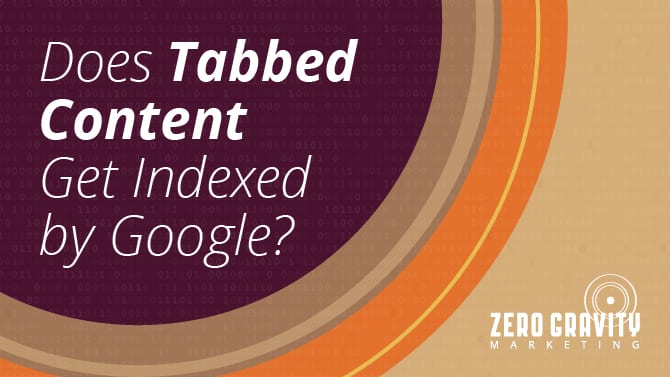It’s been a hotly contested debate among SEO experts for some time – tabbed and accordion content and SEO. Does accordion content get indexed? How about tabbed content?
Google has always ranked sites based on the user experience which is why tabbed content SEO has traditionally been seen as less weighty in search engine results than SEO terms that show up when the page loads. A user searching for a set item, will skim the opening page to find what they’re looking for. They won’t often open tabs or click through to content that’s not immediately showing. It follows suit that when a searcher lands on a page because the keyword is in a tabbed or hidden field, they’ll often leave the site without searching further. For the user, this site appears to have missed the mark of what they’re searching, so the user experience here is negative.
Accordion Content and SEO
Accordion content is a term derived from the instrument itself. It’s a way to create links and lists on your web page to better organize content. The user can open further information by clicking through to reveal the larger pieces of content. This is a popular design aspect for a number of reasons. But for SEO purposes, it was traditionally thought that search engine terms used on the front page, or what’s immediately seen by a user without clicking into any hidden fields, were more valuable.
It’s always been debated how valuable SEO terms were in those hidden fields, like tabbed content, sliding menus, and accordion content. Google has never released any guidelines or official statements on how it ranks content that’s in hidden fields. We do know that Google crawls this content, but test data previously showed that the content inside a hidden field was treated with less importance than SEO content that’s not hidden. Oddly enough, this was specific to Google. Other search engines seemed to treat SEO terms equally, whether in hidden fields or not.
If SEO Isn’t Useful in Hidden Fields, Why Use Them?
There are a number of great reasons to use various design options that allow for hidden fields. A lot of websites use these features specifically to measure engagement and help them build their marketing funnel. They collect the analytics on users who take action by clicking through to the next section of content. In some cases, hidden fields might simply be a measure to improve user experience. The design allows the user to determine how much of the content they need to see. For instance, one user might glean all they need from the opening page. Another user might want to dig deeper, opening hidden fields to get more information on certain aspects of the page or services.
There was never a negative aspect to using hidden fields, other than the inability to get SEO terms ranked from that content. Most content creators simply tailored their SEO efforts for the loading page content, rather than the hidden content fields.
What makes the matter slightly more convoluted is the fact that Google hasn’t officially released a stance on whether or not it’s okay to use SEO in hidden fields. The prominent thought that they’re weighted less is based on experience, though that’s hard to quantify and test. As recently as 2017, Shai Aharony of Reboot published a blog detailing his experiment which did show that hidden content SEO did not do as well in rankings.
How Mobile First Changes Tabbed Content SEO
Always one to make user experience a priority, Google has been pushing for websites to adopt a mobile optimization standard. The Mobile First indexing initiative rolled out in March of 2018 makes a few major changes for website rankings on Google. First, it’s important to understand that Google isn’t decreasing the ranking for sites designed for desktop. It’s simply prioritizing the mobile version first in their search. If you have two different versions of your site, one for mobile and one for desktop, the mobile version will be the one that immediately ranks and is cached.
That being said, does tabbed content get indexed in this new mobile first world? The initial indications are that hidden content will be treated equally with regard to SEO ranking. Mobile design necessitates using hidden fields to accommodate the smaller screens of smart phones and iPads. The design aspect is more convenient to users while making the site more aesthetically pleasing. So, Google doesn’t want to penalize sites for using design features that aid in user experience.
Early test data indicates that hidden field SEO is treated with equal weight as that on the loading page. Google’s John Mueller confirmed that SEO in hidden fields would be treated the same as content on the first page over the summer. As we move into mobile first, adding your SEO strategy to hidden fields to help bolster your organic search results will likely see a higher impact that it would have in years past.
Do you need help optimizing your website? We here at Zero Gravity Marketing have a team of SEO experts that are ready to help you out. Contact us today to learn more about how we can help your website move up the rankings!









